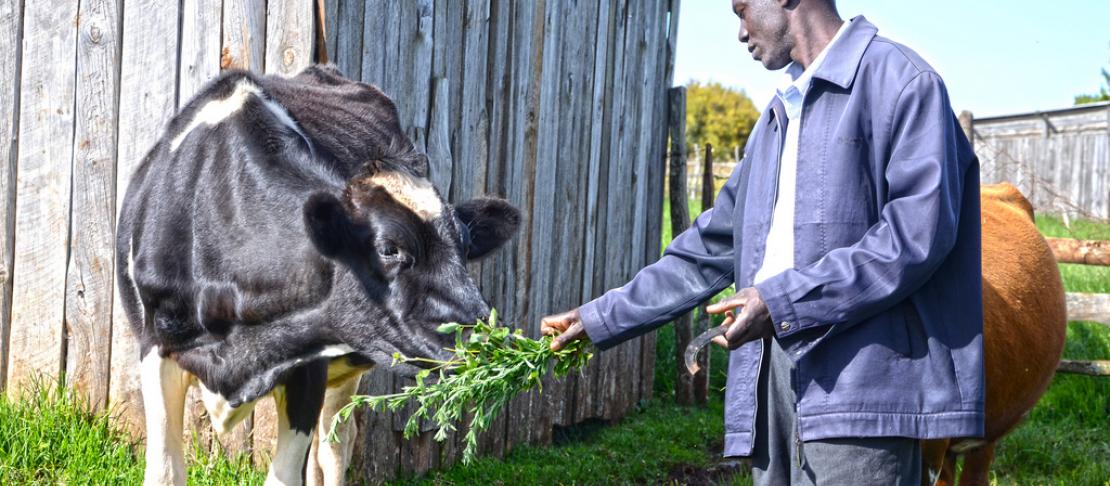Scaling up climate-smart dairy practices in Kenya through Nationally Appropriate Mitigation Actions

Summary
The research was implemented in collaboration with the World Agroforestry Centre (ICRAF) and the International Livestock Research Institute (ILRI).
The livestock sector is responsible for 14% of all human-induced greenhouse gas emissions, making it a key sector for mitigation action. Within the dairy sector specifically, better feed production and feeding practices can bring strong mitigation and livelihood benefits, while providing increased resilience to climate change. By focusing on the mitigation benefits derived from these practices as an entry point, the dairy sector of Kenya is leveraging climate finance to promote sustainable development. A meta-analysis of various climate-smart dairy practices, industry know-how, as well as the latest Nationally Appropriate Mitigation Actions (NAMAs), was conducted to establish a repertoire of best practices. These climate-smart feeding and husbandry practices were disseminated to 600,000 farmers from a variety of Kenyan Dairy organisations, including:
- Kenya National Farmers’ Federation (KENAFF)
- Kenya Livestock Breeders Organization (KLBO)
- Kenya Dairy Producers Association (KDPA)
- Kenya National Milk Producers Organization (KENDAPO)
- Association of Kenyan Feed Manufacturers (AKEFEMA)
- Dairy Traders Association
As a result of the project, over USD 3.5 million in financing has been leveraged from the Livelihoods Fund and Brookside Dairy.
Climate-smart actions in the dairy sector in Kenya have huge potential. The Government of Kenya estimates that these actions can be scaled up to reach 1.8 million households, decreasing the country’s emissions by 3.3% of its 2010 emissions, while sustaining 180,000 jobs in the sector and improving smallholder incomes by USD 1000-2000 per year.
Key facts
- The project disseminated climate-smart dairy feeding and husbandry practices to 600,000 farmers
- 25% of the farmers reached were women
- Over USD 3.5 million in private investment has been leveraged
- Soil erosion can be reduced on 100,000 ha of land by 2018
- 1.2 Million tCO2e are expected to be mitigated by 2018
Lessons: key elements of success
- Identifying existing value chain actors and supporting institutions working with large numbers of farmers help scale the adoption of best dairy management practices
- The main strategies for the development of the dairy NAMA was (i) to identify best practices from existing experience at farm, supporting institution and policy levels; (ii) to support innovation in areas where existing experience is lacking; (iii) to involve diverse stakeholders in identifying best practices and designing the NAMA interventions.
Further reading
Related research outputs
- van Dijk S, Tennigkeit, T, Wilkes A. 2015. Climate-smart livestock sector development: the state of play in NAMA development. CCAFS Working Paper No. 105. Copenhagen, Denmark: CGIAR Research Program on Climate Change, Agriculture and Food Security (CCAFS).